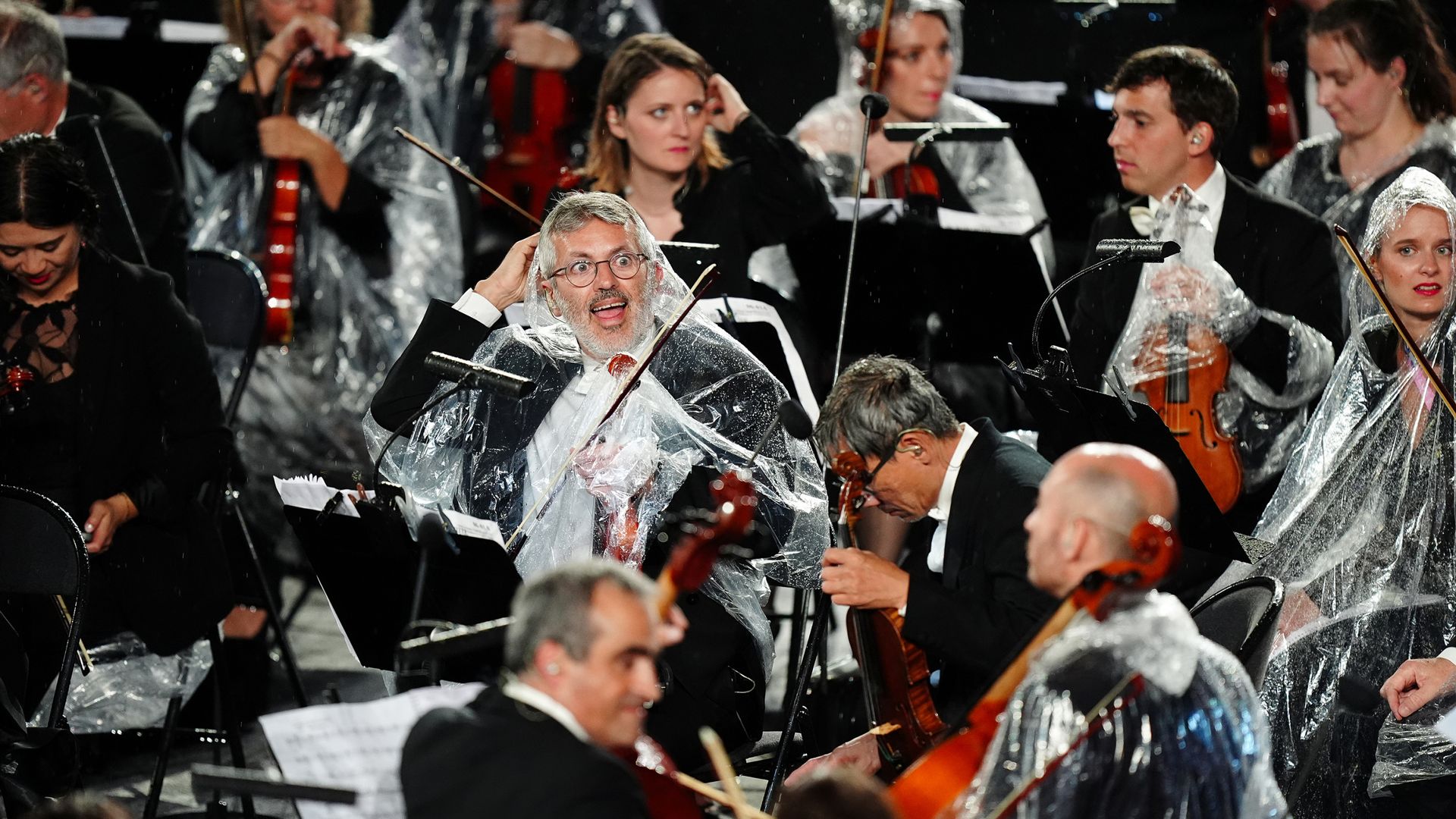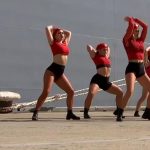Athletes floating by were immersed in a journey through French culture and values.
An Olympic city’s landmarks took centre stage like never before in an opening ceremony.
All while projecting Paris as a hub of creativity, technological innovation and revolutionary zeal from the past to the present.
This was a daring vision delivered in the most testing of conditions.
Terror fears forced a scaling back of the audiences allowed by the River Seine to see an ambitious show spread across a 4-mile route.
And a downpour saw many spectators flee the rain before the show was complete with vantage points of the spectacle already limited by security forces.
Read more:
What your rights are if you can’t travel to Paris Olympics
The biggest security threats facing the Olympics
Hockey player opts to have part of finger amputated to compete at Paris Olympics
Police investigating alleged ‘gang rape’ of Australian woman, 25, in Paris just days ahead of Olympics
French MP says Israeli athletes ‘not welcome’ at Paris Olympics
Moving away from the usual stadium setting with an 85-boat flotilla gave new energy to the athlete parade with flagbearers on barges.
But it was a test of endurance for viewers at home and those soaked on the ground.
It took almost four hours for this elaborate and unique production to provide the most unexpected moments.
Even the appearance of Lady Gaga singing was less of a surprise once she was spotted here this week and the performance – in French of Mon Truc En Plumes in a tribute to Zizi Jeanmaire – was recorded before the delegations were even on the water.
Cabaret elements were predictable while still slickly produced with a Moulin Rouge can-can dance.
Official camera angles carefully avoided showing empty riverbanks. And a downside to staging such a sprawling show across a capital like this is for those on the ground most of the creative endeavour was unseen.
Even dignitaries in the grandstands were not spared a drenching at the Trocadero and reliant on big screens to see the most eye-catching elements as an unidentified torch bearer darted across rooftops and reached a rebuilt Notre Dame.
But the VIPs could – if glancing into the distance – see Celine Dion rounding off the show under the Eiffel Tower with her first live performance since being diagnosed with a neurological disorder in 2022.
And just before, there was no audience nearby to see it all build up to the moment kept truly secret after so much anticipation.
Who would light the cauldron? And where would it be?
A torch relay that began in April with the lighting at ancient Olympia saw Zinedine Zidane, Serena Williams and Rafael Nadal among the sporting greats carrying the flame to the finish.
There was 100-year-old Charles Coste – an Olympian cycling champion for France at the 1948 London Games.
Then the honour of lighting the cauldron fell to greats of French sport – Teddy Riner (judo) and Marie-Jose Perec (athletics).
And no one could have predicted what came next. One final first in such a unique opening ceremony.
These games won’t see a cauldron sitting statically for the next 16 days.
Instead it will float above the skies of Paris after a ring of fire was carried into the sky – a tribute to the first gas balloon flight on the same site at the Tuileries Garden 241 years ago.
Keep up with all the latest news from the UK and around the world by following Sky News
Organisers will be hoping it burns brightly throughout a games intended to spark new life into the Olympics after the pandemic but in a world torn apart by conflicts.
Some booing of the Israeli delegation was a reminder of the divisions hanging over Paris 2024.
But IOC president Thomas Bach told athletes: “Now we are part of an event that unites the world in peace.”
Be the first to get Breaking News
Install the Sky News app for free
One glitch in the opening ceremony was the five-ring Olympic flag being flown upside down opposite the Eiffel Tower.
It could look like an unintended distress call as the games begin under the cloud of doping scandals, sabotage on rail lines and terror fears that stalk Paris.
But a city on edge managed to stage the biggest open-air stage show before a sports event.






















